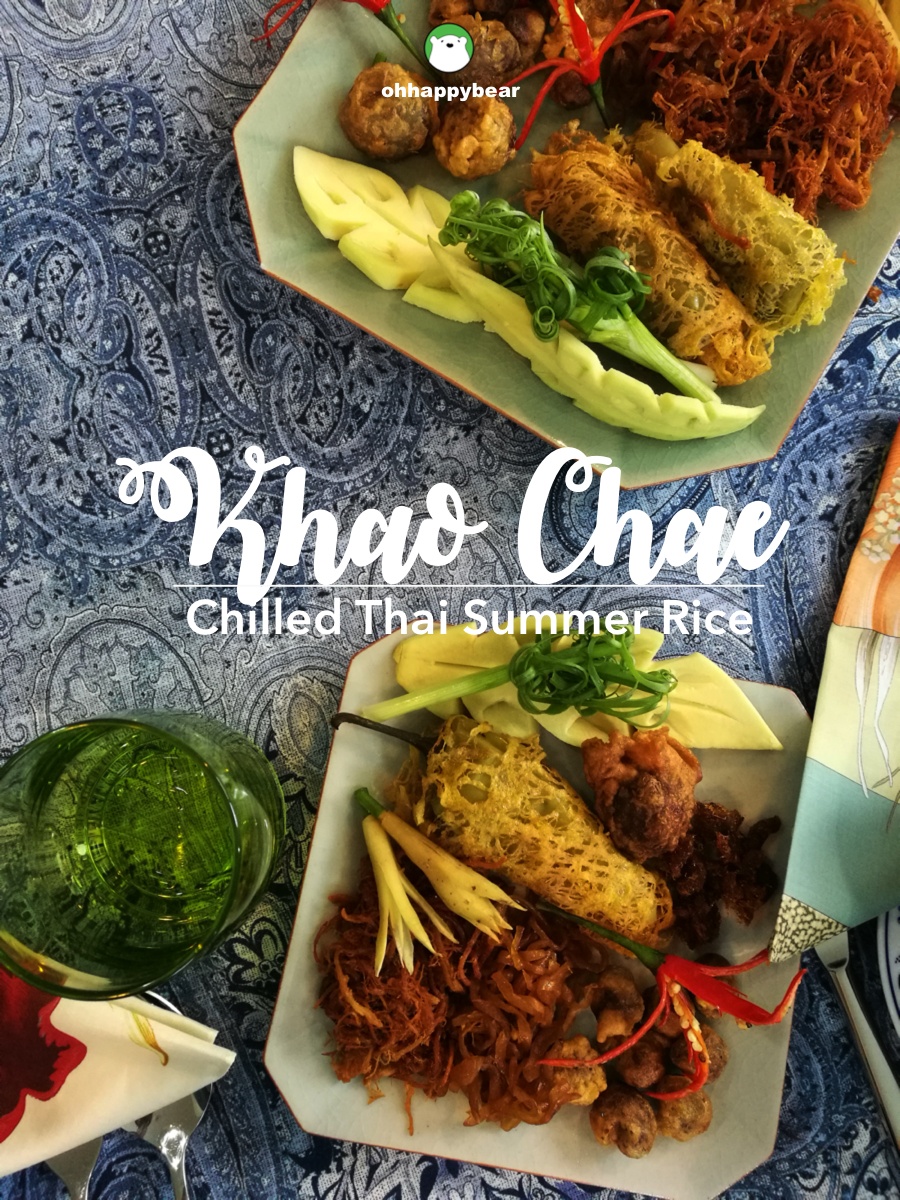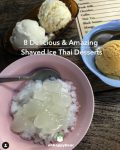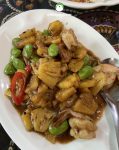Bangkok, Thailand (16 February 2021) – I didn’t get to enjoy and fully comprehend a set of Khao Chae or the Thai chilled summer rice until my mid-30s. Throughout my earlier years, Khao Chae was, in my idea, a quaint meal older people eat over conversations. What a weird combination, I thought, cooked rice, not unlike the typical steamed rice, but served in a floral water and crushed ice, with oily and sweet side dishes that also include a combination of fresh green mangoes, green onion, cucumber, and carved finger roots or Krachai (กระชาย).
But then one day, things suddenly shifted inside of me. I was in Sanguan Sri restaurant with friends, munching on this once-a-year treat. And to my surprise, I was totally into it. The perfumed, chilled, and heavily iced water and the rice and the combination of the sides, with occasional breaks nibbling onto those green mangoes and the fresh finger roots, totally satisfied me. It was a hot day and Khao Chae so perfectly soothed the scorching Thai summer. It was such a refreshing pick-me-up lunch.
The Khao Chae-eating culture during summertime began in the west parts of Siam, at the Mon community not too far from Ratchaburi. The town shares borders with Myanmar with many ethnical communities riddled with their own multi-cultural pockets. Khao Chae used to be a celebratory meal, marking the Thai new year, or Songkran. The festivity that takes place in the summer month of April does require some soothing chill from the food.
But Khao Chae caught on and moved far beyond that religious origin. Khao Chae was seen in many royal kitchens where, as per usual, the side dishes had been tinkered to become much more elaborate. The combination of tastes, by adding those green mangoes and herbs, make this meal an acquired taste for many.
In today’s Bangkok, Khao Chae has become a precursor of summer. At Sanguan Sri where I usually have the treat, they announce the serving of Khao Chae with the arrival of summer about early in March. A daily serving will continue until the ‘first rain’ or ‘Fon Raek ฝนแรก’ about May each year.
A set of Khao Chae has a staple set of side dishes. There is the rice, of course, and then Look Kapi or mini-balls of shrimp paste simmered with herbs and served in a light blanket of eggs. There are also stuffed green chillies wrapped in ‘Rhoom’ or hand-sewn omelette, sweet radish, sweet shredded beef or pork, crispy fish, and a set of greens (green mangoes, finger roots, green onion, and sometimes cucumber). The details in the preparation differ one Khao Chae from another, with families claiming their recipes hailing back generations.
A set of manners apply for one to properly appreciate Khao Chae. The rice, which in this case, is al dente, is not to be mixed with the side dishes. At all. Unlike eating Chinese-style boiled rice or Khao Tom, connoisseurs of Khao Chae will frown upon seeing someone mixing the side dishes like that. Just eat one bite of the side followed by a spoonful of rice, and make sure to keep the rice bowl clear. Nibbling those greens whenever you feel like a break from the savouries. That’s not too hard, is it?
Also, there’re certain ways one can identify a good Khao Chae, and many are just by looking. I have mentioned that Khao Chae does require an exquisite amount of work. From rice, which needs to be specially cooked for the perfect al-dente state, to perfuming the water with seasonal jasmine, selecting the uniformity of shallots, green chillies, to the stuffing, and to simmering, kneading, and eventually to the making of the rhoom หรุ่ม or the hand-strewn omelette. The ‘rhoom’ is definitely the first point to judge, the thing we all see upon being served with a set of Khao Chae. Intricate rhoom, beautiful rhoom, golden brown to perfection is something I would consider that chef to be a real Khao Chae chef.
Well, if you like my blog and my writing, you can stay in touch by following my Instagram, Facebook, and YouTube, too. See you around!
© OHHAPPYBEAR


